
Roots
Consider for a moment the quiet whisper of a comb gliding through strands, the rhythmic clip of shears, or the gentle touch of oil smoothing a crown. These actions, seemingly simple, carry an echo across millennia, connecting us to a lineage of human care and adornment. The question of whether hair professionals were essential to ancient Egyptian royal appearance reaches beyond mere historical curiosity; it touches upon the universal human desire for presentation, status, and perhaps, a deeper connection to the divine. For the ancient Egyptians, hair was never simply hair.
It was a canvas, a statement, a symbol of power, purity, and a careful preparation for both this life and the next. To truly grasp the role of hair specialists in their royal courts, we must first look to the very foundations of their approach to beauty and the human form.
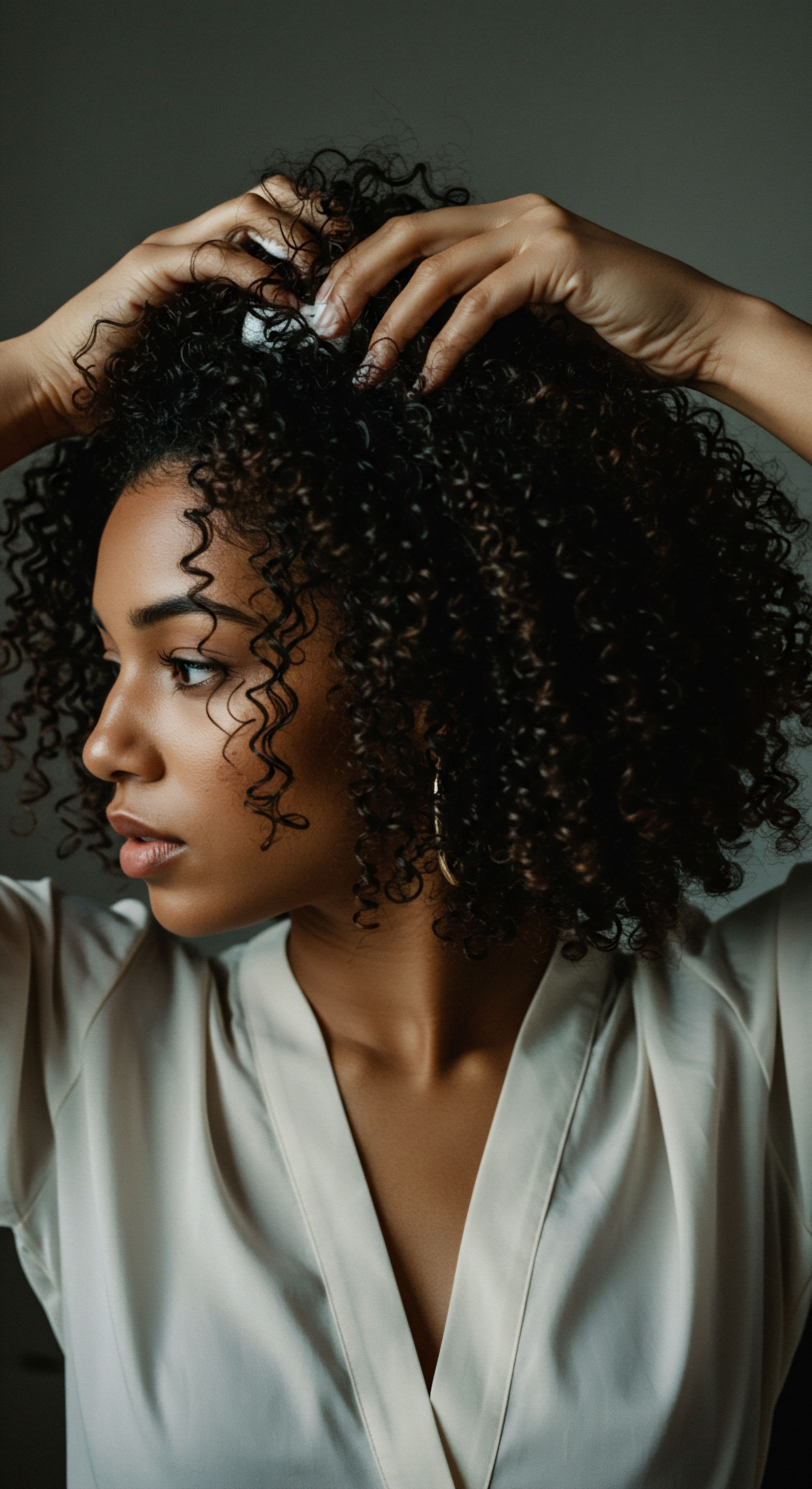
The Royal Crown and Its Hair
Ancient Egyptian royalty, with their carefully constructed public personas, understood the profound power of visual communication. Every element of their appearance, from the elaborate headdresses to the meticulously styled wigs, served as a deliberate statement of their divine authority and social standing. The concept of a ruler’s hair, whether natural or augmented, being a symbol of their connection to the gods was deeply ingrained.
The pharaohs, often depicted with false plaited beards, linked their earthly presence to Osiris, the god of the dead, who was consistently shown with a beard. This symbolism extended to their head coverings, such as the nemes headdress or the various crowns, each signifying dominion over Upper and Lower Egypt.
Wigs were a cornerstone of this royal presentation, worn by both men and women of the elite. They were not simply fashion accessories but served practical purposes too, offering protection from the scorching sun and acting as a barrier against lice, a common concern in the hot climate. The quality and elaboration of these wigs directly correlated with the wearer’s wealth and status.
Those crafted from human hair were the most expensive, often supplemented with plant fibers or even gold threads for added volume and luster. The sheer weight of some royal wigs, sometimes reaching up to 3 kilograms (6.6 pounds), hints at the substantial effort and specialized skill required for their creation and maintenance.
Ancient Egyptian royal appearance was a carefully constructed visual language, where hair and wigs served as potent symbols of divine authority and social standing.
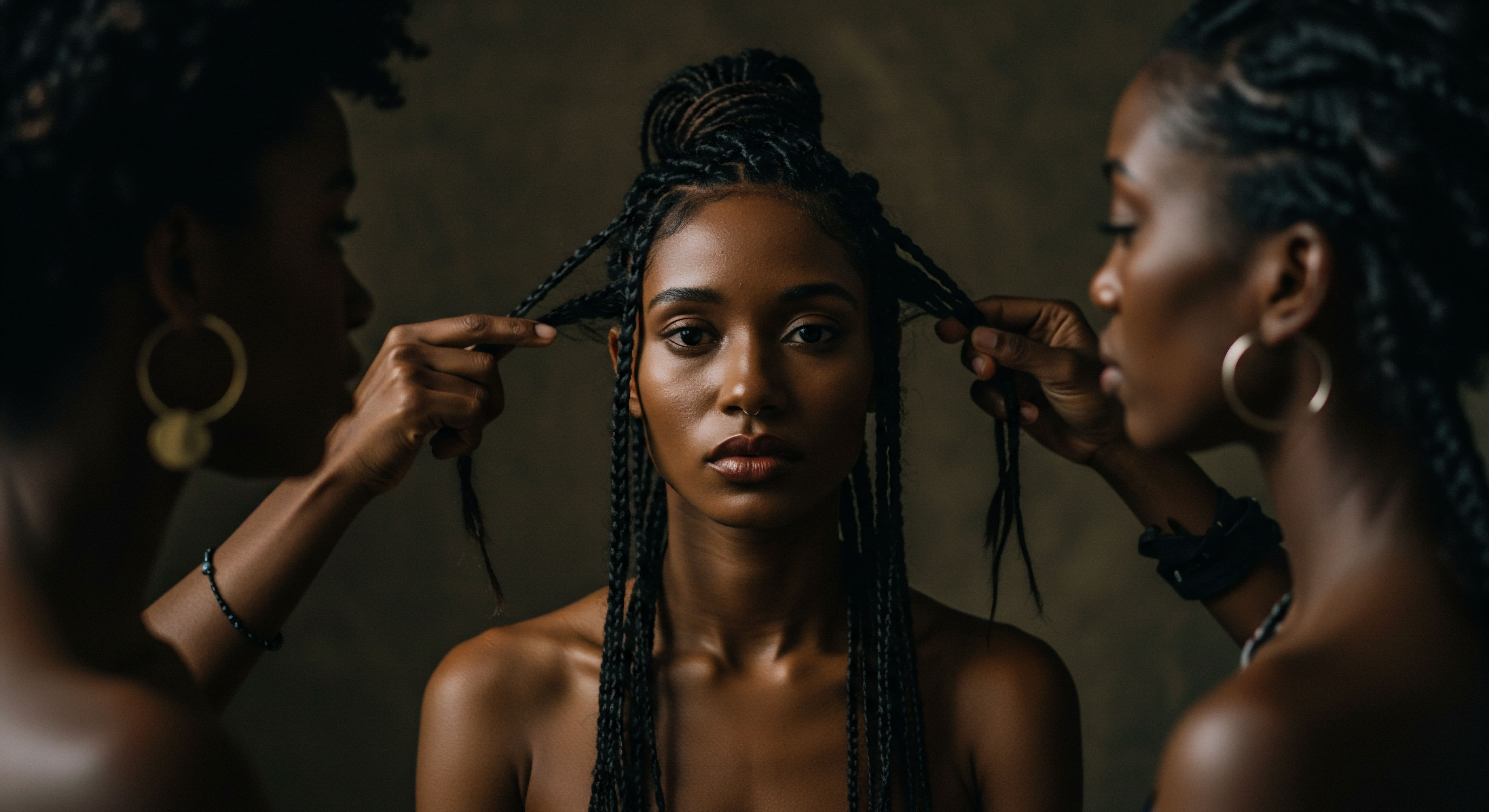
Early Hair Care Foundations
The archaeological record, alongside tomb paintings and inscriptions, provides a window into the long-standing tradition of hair care in ancient Egypt. Evidence of copper razors dates back to the 3rd dynasty (27th century BCE), indicating that shaving and grooming were established practices early in their civilization. The very word for barber, known from the Old Kingdom, literally translates to “someone who uses a spatula,” a tool depicted in early tombs. This suggests that individuals specializing in hair removal and styling were present from the earliest periods, laying the groundwork for more formalized professions.
The importance of personal cleanliness in ancient Egypt cannot be overstated. The warm climate made daily grooming a necessity, and cleanliness was equated with purity and social status. Priests, for example, were known to shave their entire bodies every three days to maintain ritual purity and avoid lice infestations. This cultural emphasis on hygiene naturally extended to hair, necessitating consistent care and attention.
- Copper Razors ❉ Found in tombs as early as the 3rd dynasty, demonstrating early hair removal practices.
- Hair Combs ❉ Decorative and functional, made from materials like ivory, dating back to 3900 BCE.
- Hairpins ❉ Used to secure long hair, with early examples from 4000 BC, often found in female burials.
While the precise hierarchy of hair professionals in the earliest dynasties remains somewhat elusive, the foundational practices of hair grooming, wig creation, and the societal value placed on appearance were clearly established. These elements created an environment where specialized skills would naturally become not only valued but essential for those at the apex of society.

Ritual
Stepping into the world of ancient Egyptian royal grooming feels like entering a chamber where daily routines transformed into meticulous rituals. It was a space where the pragmatic pursuit of cleanliness converged with the symbolic demands of divinity, all orchestrated by hands trained in a refined art. This section delves into the practicalities of how royal hair, whether natural or artificial, was managed, styled, and maintained, revealing the sophisticated techniques and specialized tools that point to the undeniable presence of dedicated hair professionals. The care of royal appearance was not a casual affair; it was a daily testament to order, status, and the very essence of Egyptian kingship.
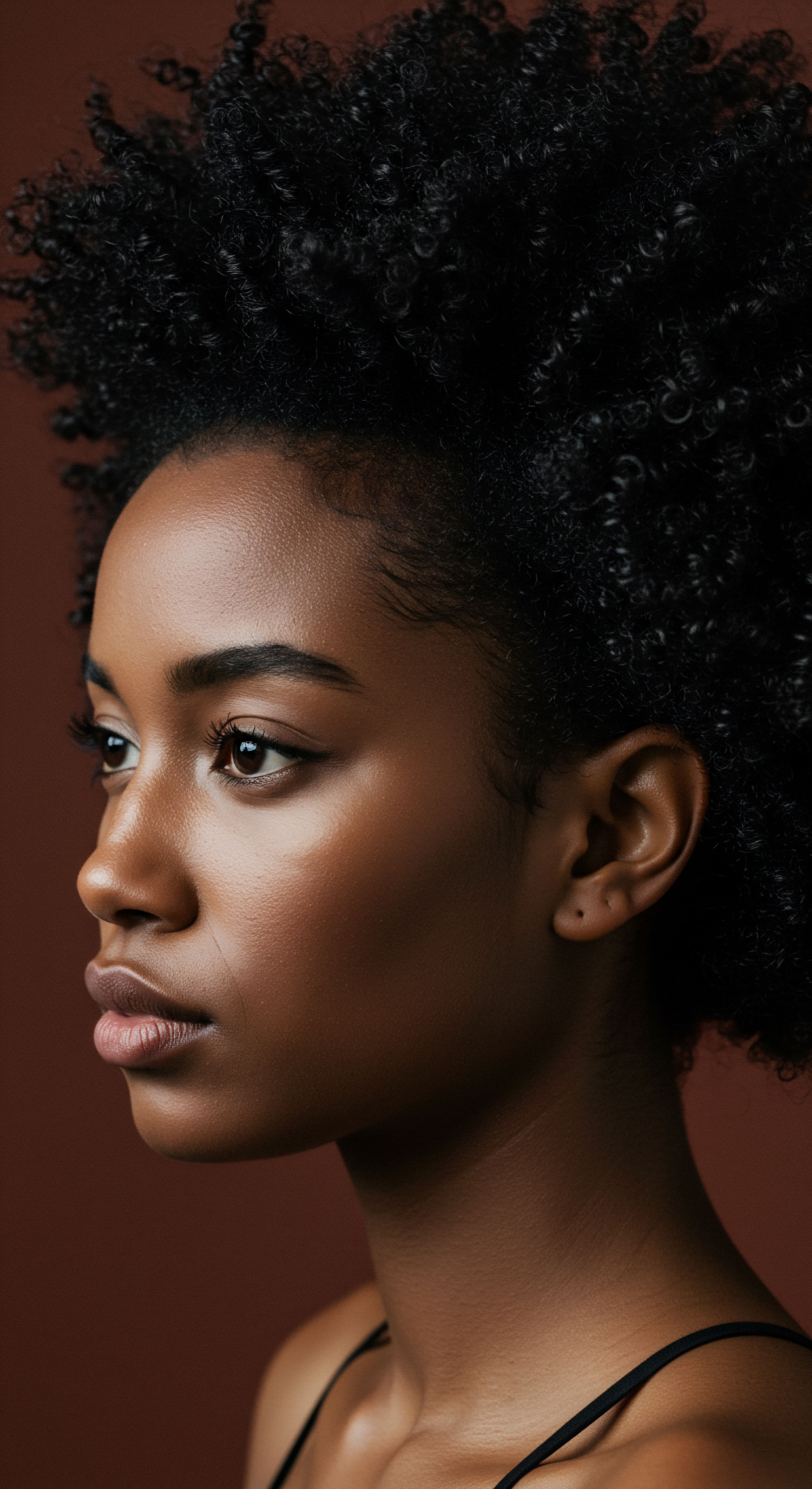
Were There Specialized Royal Hair Practitioners?
The evidence strongly indicates the existence of specialized hair practitioners within the ancient Egyptian royal court. Tomb scenes, inscriptions, and surviving texts paint a picture of a well-defined professional landscape. Hairdressers and barbers were recognized professions, often holding respected positions.
They could be broadly categorized into “Private” and “State” practitioners, with state hairdressers further divided into “Royal” and “Palace” institutions. This stratification suggests a formal system for managing the grooming needs of the elite, particularly the royal family.
Titles such as “Overseer of Royal Hairdressers” and “Director of Palace Barbers” appear in historical records, indicating individuals of high rank responsible for the king’s grooming. The “Overseer of Royal Hairdressers” would have overseen the care and maintenance of the king’s hair and crowns, while the “Director of Palace Barbers” was responsible for shaving the king and attaching the ceremonial false beard. These roles extended beyond mere aesthetics, often involving the handling of royal regalia, some of which was kept in temples, underscoring the sacred dimension of their duties.
The sarcophagus of Queen Kawit from the 11th Dynasty provides a compelling visual example, depicting her hairdresser, Innu, meticulously tending to the queen’s locks. Another fragment shows hairdresser “Henut” styling Queen Neferu’s hair. Such depictions suggest that private hairdressers were a constant presence for queens, highlighting the personalized and ongoing nature of royal hair care.
The intricate care and symbolic significance of royal hair in ancient Egypt necessitated the expertise of dedicated, often high-ranking, hair professionals.

The Artistry of Royal Wigs
Royal wigs were masterpieces of ancient Egyptian artistry, demanding considerable skill to create and maintain. These were not mass-produced items; they were bespoke creations tailored to the individual and their status. Wigmakers, known as is-šn, were a distinct profession, and their craft was considered respectable, even open to women. The raw material for these luxurious items—human hair—was a valuable commodity, often obtained from clients, through purchase, or from slaves.
The construction of these wigs involved intricate techniques. Human hair was braided into hundreds of small plaits, often layered to create voluminous, elaborate styles. To set these complex styles and provide a lasting sheen, natural substances like beeswax and plant resins were used.
The remarkable preservation of some ancient Egyptian wigs, such as the one found in the tomb of Merit, wife of the architect Kha, or the wig of priestess Nauny, speaks volumes about the durability of their construction and the skill of their makers. These surviving artifacts show styles ranging from numerous curly braids to multi-layered, artificially curled arrangements, demonstrating a sophisticated understanding of hair manipulation.
| Tool or Material Copper Razors |
| Purpose Shaving heads, faces, and bodies for hygiene and ritual purity. |
| Historical Context Evidence from 3rd Dynasty, tomb of Hesy-re. |
| Tool or Material Combs |
| Purpose Detangling, styling, and as decorative accessories. |
| Historical Context Found in tombs from 3900 BCE, made of ivory, bone. |
| Tool or Material Hairpins |
| Purpose Securing natural hair and wigs, aiding in styling. |
| Historical Context Commonly used from 4000 BC, depicted in tomb scenes. |
| Tool or Material Beeswax and Resin |
| Purpose Setting wig styles, providing sheen, adhering extensions. |
| Historical Context Used extensively in wig construction and daily styling. |
| Tool or Material Natural Oils (Castor, Almond, Moringa) |
| Purpose Moisturizing, strengthening, and adding luster to hair and wigs. |
| Historical Context Used for hair health and as styling aids. |
| Tool or Material These elements collectively enabled the sophisticated hair practices of ancient Egyptian royalty. |
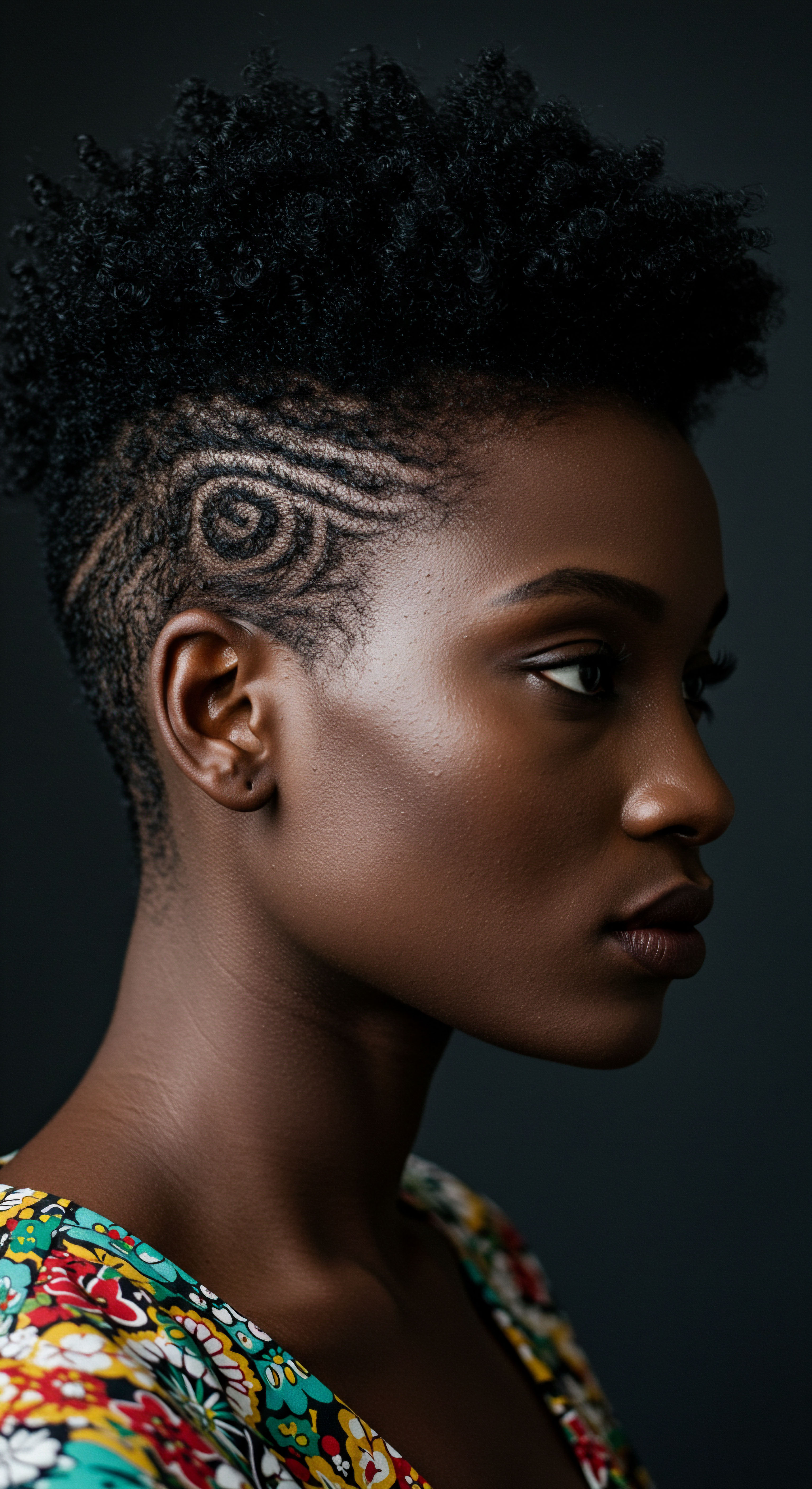
Daily Routines and Afterlife Preparations
The meticulous attention to hair extended beyond daily life into preparations for the afterlife. Ancient Egyptians believed that looking good in the next life was as important as in this one. This belief led to the inclusion of wigs and hair care items in funerary goods, with many mummified bodies, especially from royal or aristocratic tombs, being buried with wigs or artificial hair coverings.
A study of ancient Egyptian mummy hair revealed a fascinating insight ❉ while bodies were generally mummified following established procedures, hair was sometimes treated independently. In some cases, hair was protected from the resinous embalming materials, instead coated with a fat-based substance to maintain its style. This suggests a deliberate effort to preserve the individual’s hairstyle, underscoring the enduring importance of appearance, even in death. This specialized treatment for hair during mummification would undoubtedly have required skilled hands, further cementing the role of professionals who understood both the practicalities of hair styling and the sacred rituals of funerary preparation.
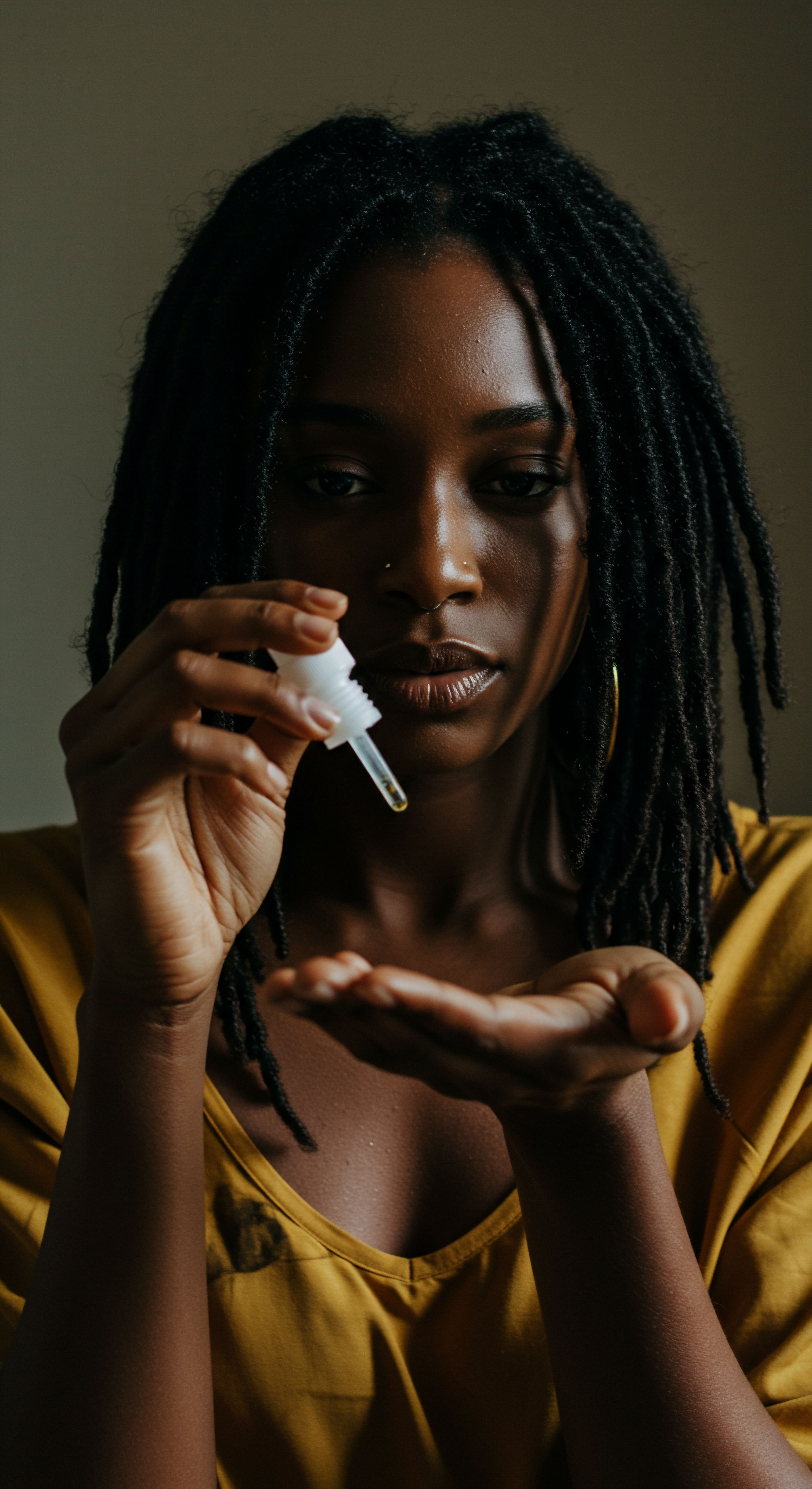
Relay
To truly grasp the extent to which hair professionals were essential to ancient Egyptian royal appearance, we must move beyond the surface of vanity and technique, delving into the intricate web of cultural, social, and even economic forces at play. The royal coiffure was never a standalone aesthetic choice; it was a deeply embedded element of a complex system that reinforced hierarchy, communicated divinity, and even dictated the flow of valuable resources. Here, we peel back the layers, exploring the sophisticated interplay of factors that made specialized hair care an indispensable part of royal life.

How Did Hair Specialists Shape Royal Identity?
The role of hair specialists in ancient Egypt transcended mere styling; they were active participants in the construction and maintenance of royal identity. Hairstyles and wigs were not just indicators of wealth, but potent symbols of social status, age, and even religious standing. For the elite, particularly royalty, hair care was a significant marker of power and authority. The elaborate nature of royal wigs, often adorned with gold threads or precious stones, served as a visual signal of the wearer’s elevated position, distinguishing them from the general populace.
Consider the pharaoh’s false beard, a consistent symbol of divine authority and connection to Osiris. This was not a natural growth but a meticulously crafted accessory, attached and maintained by specialists. The care of such ceremonial items, alongside the king’s natural hair and crowns, fell under the purview of high-ranking palace officials, like the “Overseer of the Palace Barbers.” Their daily duties, often depicted in tomb scenes, were integral to the king’s toilette, a ritualistic preparation that underscored his divine status. This continuous, ritualized attention to royal hair, from shaving to wig placement, speaks to the indispensable nature of these skilled individuals in upholding the pharaoh’s public and sacred image.

What Unique Insights does Ancient Hair Analysis Offer?
Modern scientific analysis of ancient Egyptian hair samples provides remarkable insights into the practicalities of royal hair care and the products used. These studies, often involving microscopy and chemical analysis, reveal details about hair condition, original color, styling techniques, and even parasitic infestations.
One particularly compelling finding, as reported by Natalie McCreesh and her colleagues from the University of Manchester, involves the discovery of a Fat-Based ‘gel’ used to style and set hair on mummies. In a study of 18 mummies, dating from 3,500 to 2,300 years ago, researchers observed that nine of them had hair coated in a mysterious fat-like substance. Gas chromatography–mass spectrometry identified long-chain fatty acids, including palmitic and stearic acid, as components of this coating. This ‘hair gel’ was found on both artificially mummified and naturally preserved bodies, leading researchers to conclude it was a beauty product used in life, not solely for embalming.
The application of this fatty substance would have helped hair styles, particularly curls, stay set in place, suggesting an active, sophisticated approach to styling. This challenges a simplistic view of ancient grooming, showing a practical understanding of hair aesthetics and product chemistry. The fact that the hair was often protected from harsher embalming resins suggests a deliberate preservation of the individual’s hairstyle, even after death. This detailed chemical fingerprint of ancient hair products underscores the expertise required to formulate and apply such substances, further supporting the idea of specialized professionals.
The use of hair extensions also offers a glimpse into ancient hair practices. Archaeologists have found evidence of hair extensions and dyes dating back to at least 3400 BCE. One striking example is a woman buried in Amarna over 3,300 years ago, whose remains revealed a complex coiffure with approximately 70 extensions fastened in layers.
These extensions, often made of human hair, were secured with beeswax and resin, demonstrating advanced techniques that required skilled hands. The prevalence of such elaborate hair constructions, even among non-royalty in a city like Amarna, implies a widespread availability of hair specialists and the raw materials they needed.
- Hair Trading ❉ Evidence from texts, like those from the Old Kingdom, lists nbA and bbwt (translated as ‘wig’ or ‘circular wig’) alongside gold and incense, indicating hair as a valuable commodity in their barter economy.
- Human Hair Sourcing ❉ Wigs were primarily made from human hair, often bought from the poor or from slaves, a practice that mirrors modern wig production in some regions.
- Wig Factories ❉ Ruins of wig factories have been discovered in Egypt, suggesting a dedicated industry to meet the high demand for hairpieces.

Cultural and Economic Dimensions
The demand for elaborate hair and wigs created a distinct economic ecosystem. Hair itself was a valuable commodity, traded and utilized in specialized workshops. The presence of “wig factories” indicates an industrial-scale production, catering to the needs of the elite and, over time, a broader segment of society. This economic activity naturally supported a class of artisans and professionals dedicated to hair.
The social standing of these hair professionals was notable. Barbers, for instance, were highly respected individuals, sometimes even performing minor surgical procedures in addition to grooming. The fact that titles like “Overseer of the Palace Barbers” existed, and that some high-ranking nobles like Ty and Ptahshepses in Dynasty V held such roles, speaks to the prestige associated with these positions. Their ability to gain access to the highest echelons of the royal court, and even to be buried in grand tombs, underscores their significance.
The evolution of hairstyles itself was often dictated by royal fashion. What was popular for the pharaoh and the court tended to be adopted by officials and even trickled down to the populace, albeit with hierarchical variations. This top-down influence meant that royal hair professionals, by shaping the appearance of the king and queen, were indirectly influencing broader societal beauty standards and practices. Their skills were not just about maintaining individual royal appearances, but about setting trends and upholding the visual continuity of the ruling class.
| Role Title Overseer of Royal Hairdressers |
| Primary Duties Grooming and maintenance of king's hair and crowns. |
| Significance High-ranking official, close association with royal regalia. |
| Role Title Director of Palace Barbers |
| Primary Duties Shaving the king, attaching royal beard. |
| Significance Responsible for ritual purity and symbolic adornment. |
| Role Title Wigmaker ( is-šn ) |
| Primary Duties Crafting elaborate wigs from human hair and other materials. |
| Significance Skilled artisan, vital for royal status display. |
| Role Title Private Hairdresser (e.g. Innu, Henut) |
| Primary Duties Personal hair styling for queens and noblewomen. |
| Significance Daily, intimate care for elite women. |
| Role Title These specialized roles highlight the structured and essential nature of hair care within the royal sphere. |
The interplay of hygiene, social stratification, religious symbolism, and economic demand created an undeniable need for specialized hair professionals in ancient Egyptian royal appearance. Their expertise was not a luxury; it was a fundamental component of royal identity, meticulously crafted and maintained to convey power, purity, and a connection to the divine, ensuring that the pharaoh’s image was always impeccable, both in life and in the eternal realm.

Reflection
As we step back from the meticulously styled wigs and carefully shaved heads of ancient Egyptian royalty, a quiet understanding settles. The question of whether hair professionals were essential to their appearance finds a resonant answer not in a simple ‘yes’ or ‘no,’ but in the layered echoes of cultural practice, societal structure, and personal meaning. Their presence was not merely a convenience; it was a cornerstone of a civilization that understood the profound language of presentation.
From the earliest dynasties, the grooming of hair, whether natural or augmented, was intertwined with power, purity, and the very journey into the afterlife. The legacy of these ancient specialists reminds us that the care of our crowns, in all their diverse forms, carries a timeless weight, connecting us to a lineage of human expression that is both deeply personal and universally understood.

References
- Fletcher, Joann. 2005. The Decorated Body in Ancient Egypt. Oxford ❉ Oxbow Books.
- Griffith, Francis Llewellyn. 1898. Hieratic Papyri from Kahun and Gurob. London ❉ Bernard Quaritch.
- Manniche, Lise. 1999. Sacred Luxuries ❉ Fragrance, Aromatherapy, and Cosmetics in Ancient Egypt. Ithaca ❉ Cornell University Press.
- McCreesh, Natalie C. Andrew G. Chamberlain, and Andrew T. Wilson. 2011. “An Integrated Study of the Hair Coating of Ancient Egyptian Mummies.” Journal of Archaeological Science 38, no. 11 ❉ 3198-3205.
- Murray, Margaret A. 1949. The Splendour That Was Egypt. London ❉ Sidgwick & Jackson.
- Riefstahl, Elizabeth. 1952. Ancient Egyptian Hairdressing. Brooklyn ❉ Brooklyn Museum.
- Speidel, Michael P. 1990. Ancient Egyptian Hairstyles ❉ A Social and Ritual Contextualisation from the Protodynastic to the End of the Old Kingdom. University College London.
- Tassie, Geoffrey. 2000. Hair and Death in Ancient Egypt. Oxford ❉ Archaeopress.
- Verner, Miroslav. 2002. The Pyramids ❉ The Mystery, Culture, and Science of Egypt’s Great Monuments. New York ❉ Grove Press.
- Wilfong, Terry G. 1997. “Gendered Artifacts ❉ The Hairpin in Ancient Egypt.” Journal of the American Research Center in Egypt 34 ❉ 67-78.